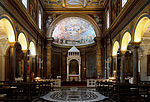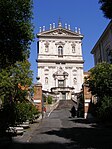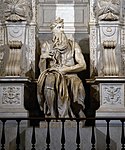Santa Maria ai Monti
1580s establishments in the Papal States16th-century Roman Catholic church buildings in ItalyBaroque church buildings in ItalyChurch frescos in RomeChurches of Rome (rione Monti) ... and 3 more
Religious organizations established in the 1580sRoman Catholic churches completed in 1580Titular churches

Santa Maria dei Monti (also known as Madonna dei Monti or Santa Maria ai Monti) is a cardinalatial titular church, located at 41 Via della Madonna dei Monti, at the intersection with Via dei Serpenti, in the rione Monti of Rome, Italy. The church is dedicated to the Blessed Virgin Mary.
Excerpt from the Wikipedia article Santa Maria ai Monti (License: CC BY-SA 3.0, Authors, Images).Santa Maria ai Monti
Via della Madonna dei Monti, Rome Municipio Roma I
Geographical coordinates (GPS) Address Nearby Places Show on map
Geographical coordinates (GPS)
| Latitude | Longitude |
|---|---|
| N 41.894522 ° | E 12.490497 ° |
Address
Università degli Studi di Roma Tre
Via della Madonna dei Monti
00184 Rome, Municipio Roma I
Lazio, Italy
Open on Google Maps










